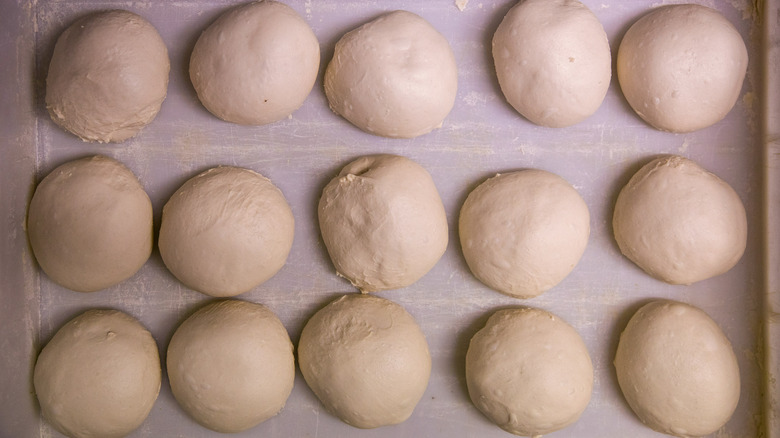Why Yeast Matters So Much When Making Pizza At High Altitudes
Creating a tasty homemade pizza dough is a complicated science— the elements need to interact in certain ways to guarantee a good outcome. When you're baking at high altitude, things can either happen too quickly or not at all, leaving you with dense dough. Yeast is an important ingredient in pizza dough at sea level, but even more so at high altitudes. If you live in an area like Denver, Colorado, or Flagstaff, Arizona, you're probably more than familiar with baking at higher altitudes.
Yeast, as a living organism, needs oxygen to convert carbohydrates into carbon dioxide, which is how it raises your dough. And at higher elevations, the air is thinner, meaning there's less oxygen. Another problem is that there's less air pressure pressing down on the dough, so it can rise as much as it wants, but then will collapse as soon as the yeast runs out of oxygen. A fast rise and fall means a dense, chewy dough.
So what's the trick to getting a light, airy pizza dough at high altitudes? Use less yeast. A good rule of thumb is to decrease the yeast in your recipe by 25%. Your dough probably won't over-rise, but it will still rise faster than if you were making pizza dough at lower altitudes. Check on your dough before the recommended time to make sure your dough hasn't risen too quickly, and then proceed as you normally would.
Other adjustments to your pizza dough can bring you the best results
Using less yeast in your pizza dough is a good idea for a less problematic pizza dough — but then you run into the problem of flavor. Yeast likes time to do its work — think of a fermented Neapolitan pizza dough and how flavorful, funky, and airy it is after a 72-hour ferment. To get the most out of your yeast at high altitudes, there are a few things you can do.
Give the dough two rises: First allow it to rise and check it before the recommended time. Then punch it down and allow it to rise one more time before shaping and proofing. The extra time will allow the yeast to do its job, both height- and flavor-wise. And make sure you do the poke test to make sure the dough isn't overproofed – overproofed dough won't spring back, and underproofed dough will spring back quickly.
If you have the time, you can opt for a cold ferment — the refrigerator will slow the yeast down so it has more time to develop good flavors. Just cover and place the dough in the refrigerator or a colder place so the yeast can ferment. Check on its progress frequently so it doesn't overproof. If you're after flavor and a boost in rising power, replacing about 25% of your liquid with a healthy sourdough starter is recommended.

